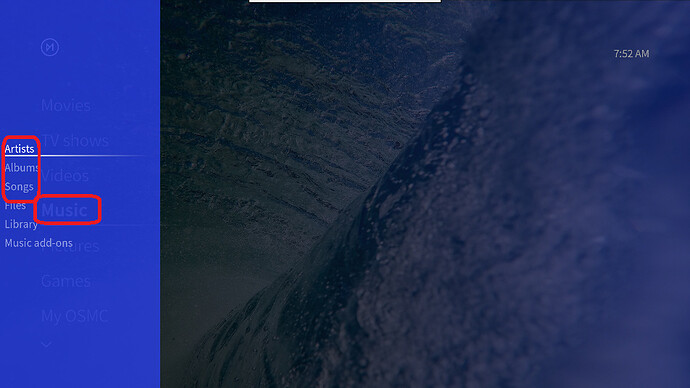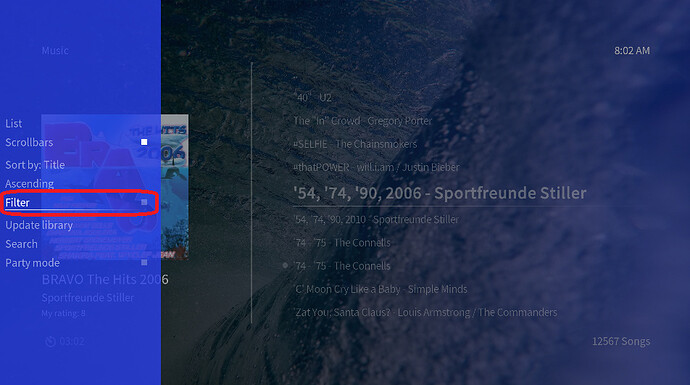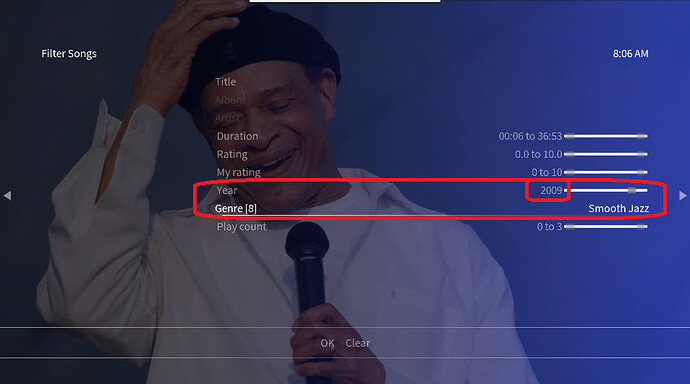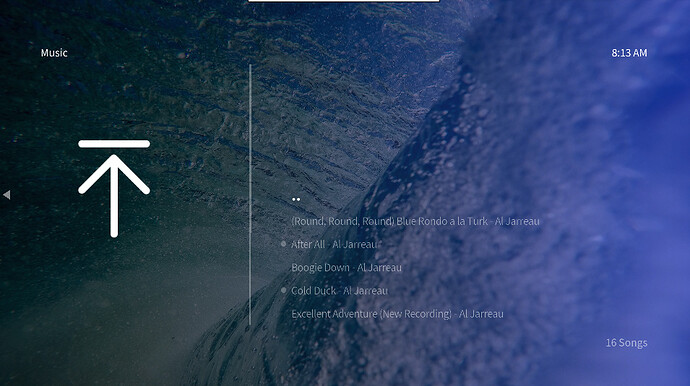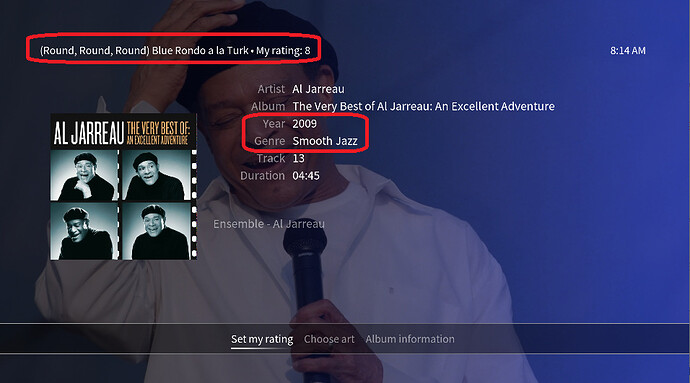Well, yes having a dedicated device to install it is the way to go. It comes from the idea of having a Raspberry Pi to do the job.
Subsonic doesn’t seem to offer a search function for years either.
B.
What are you trying to search in Subsonic? I’m using the most current version of Subsonic and DSub app on my Android phone and I was able search for any artist and/or song. Am I missing something in Subsonic or am I just lucky? I do remember there was a problem a while ago with the search function, but I totally forgot about the issue because I’ve been happily searching for music for a long time. If you want to know about which version I’m using, let me know. Maybe I can help you out.
I’m looking for an app/software that will let me search by a specific year, i.e. 1982. If I could drill down by genre that would be even nicer. So, for instance, New Wave songs from 1982.
I currently have a Bluesound Node 2i, but it has no way to search for years. Kodi does allow this within their normal desktop app, but the iOS apps don’t. This is the issue for me. Also, the bluesound software used to require I list single tracks as part of an album called “singles” for example or the tracks would not show up at all. I like the way Kodi handled this much better–i.e. putting single tracks under a separate category called “single tracks.” Makes sense, huh?
From what I can tell Roon does allow me to search my library by year. I believe I can get J River to do this as well. I don’t like the cost for Roon. I would need to sell the Node and get a replacement box. I used to utilize a computer which I’d like to avoid. I’d prefer something simple (and already put together if possible) with a digital and optical output to feed to my main system and my multi-room system. If that’s available, I do have an audio de-imbedder that I can use with HDMI, but prefer the other options.
So far it looks like the lowest cost option is J River (assuming the app has a year search) and a Raspberry Pi variant or other DLNA device(?) that I can send the signal too. I have an Unraid server that would handle the software/docker. It would be fine if the server software was inside the device too as long as it is fast enough to handle a library of ~ 3500 albums and 60k tracks in FLAC (standard or hi-res).
B.
I updated my last post yesterday with a bit of a correction. I also got curious on speed differences and loaded up my music into a ‘standard’ kodi install (all local, nothing networked) and everything worked fine once the artwork was cached.
The problem with creating playlists is that every time I add music to the system, I’d have to re-do every playlist (since I wouldn’t always know what years I was adding songs to). It’s not really a good solution for what I’m trying to do.
At this point I’m going to investigate J River some more and see if their app allows me to do searches based on year.
B.
Have you never used smart playlists before? You make a playlist with a set of parameters and it automatically renews it whenever you open it. You wouldn’t need to change anything when you added media.
Yep, that worked. Just a hassle to do it 60 or more times. I see there is a filter option from the context menu (and that would allow me to further sort by genre), but is that accessible in an app?
B.
You could manually iterate if you wanted to with a PC and then copy them over. They are only text files that look like this…
<smartplaylist type="songs">
<name>test 1991</name>
<match>all</match>
<rule field="year" operator="is">
<value>1991</value>
</rule>
<order direction="ascending">album</order>
</smartplaylist>
So you could just copy them and edit the relevant parts with something like Notepad++. If you know a smart programer they could probably come up with a script to automate this (I assume, i’m not a programmer).
It is not in the official app and I doubt it is in any other. It is also unusable for a large libraries anyway. For some reason they designed it so every single time you change anything (even adding a single character for a search term) it refreshes the search result in the background which pauses the UI for a couple seconds while that is happening. This is particular bad for the year as with a remote you can only move it a few years at a time before it pauses the UI again.
You can include genre to smart playlists though.
It’s available in Yatse but that is Android only.
What about using VNC? It offers to see the mediacenter GUI of OSMC on your device (I assume there is an VNC app for Apple products).
Just an example, trying to locate all music with Genre Smooth Jazz year 2009:
I started in the music sidebar menu, special filter options are only available if you start with Albums, Artists or Songs menu but year is only available in the Albums or Songs :
In Songs menu open the next sidebar and you’re offered a special filter option (which has a flag)
In the special filter menu you can choose:
And with that you get:
Well, whether the performance is what you expect with 60,000 music files … have a try.
Btw., I operated the OSMC GUI with VNC on a Win 10 PC to take these screenshots.
Whatever app/software you use to search your music by year, it’s still going to have to rely on the metadata within the music files being correct. Most music files only contain a Year tag which is usually the release date of the CD release in question. This is fine for ‘new’ music but for older releases this becomes pretty useless if you want to make a playlist of music from, say, 1982 since a fair proportion of the music from 1982 has probably been released, rereleased, remastered etc. multiple times since then. So your tracks originally released in 1982 are going to be more or less randomly distributed in any year since …
There is an Original release Year tag available but it is poorly supported – Kodi doesn’t use it last time I looked – so that doesn’t help a lot. And if you’re getting your metadata from Musicbrainz its use is patchy at best.
I have a ~100,000 track library pretty much evenly distributed over the last 100 years in many different genres. But I’ve more or less given up trying to organize/play it by Year since that information simply doesn’t exist in any consistent form available to Kodi or any other software I’m aware of.
Thanks @JimKnopf,
I will give this a try with the Kodi I have temporarily installed. I will have to learn to use VNC as I haven’t looked at it in at least a decade.
Yes @bluefuzz,
But I’ve taken a crazy amount of time to go through and tag every song with the release year, so compilation albums and greatest hit records (as well as individual tracks) have the release year associated with them in the “year” tag.
You have more patience than I have then … 
I have managed to automate much of the metadata with the likes of Bliss and Songkong but still, at a rough guess, 50% of my library still has the wrong dates. And I’m not going through 50,000 tracks manually to put in the correct dates …
Well, it is more just the soundtracks and compilations. For the actual albums it’s not a big deal, but yes, “too much time on my hands…”
B.
It seems that TightVNC works with iOS, so this may be a solution. I played with JRiver and it has the same issue that I have with Bluesound–it puts songs without albums under the album view as “unassigned” and even groups them by artist. There is also no “song” view which can be sort of fixed by the editing the file view.
I have to admit I still like the organization by Kodi the best.
I’m just going to give the Vero a try and see how it goes.
B.
So, I finally got the Vero set up and working. I haven’t had time to get my library in order 100%, but what do I install on the Vero to use VNC? Where do I get it?
Thanks,
Brian
I take it that this:
Hi Please try this: sudo apt-get update sudo apt-get install libvncserver0 sudo wget https://github.com/samnazarko/vnc-vero3/raw/master/aml-vnc -O /usr/bin/aml-vnc sudo chmod +x /usr/bin/aml-vnc You should now be able to start the server running /usr/bin/aml-vnc. If you want this to run constantly you can set up a systemd unit to do so.
is the part, but what is a “systemd unit” and how do I set one up?
Also, where do I type those commands above? Are they all one big chain or are they separated somehow?
Never had to do anything like this before…
Brian
